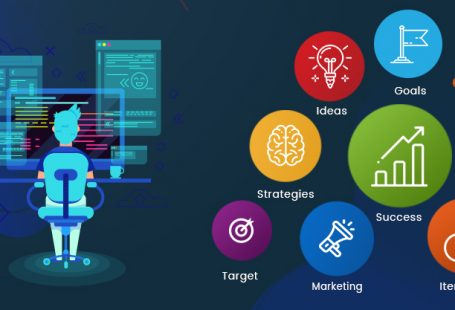We all love Sandwiches, don’t we? We all have our choices when it comes to the bread and topping, don’t we? If you think about it, Website Development Framework is the bread on which the topping, say web applications or software are built. Here too, you have the option to choose the Framework, language, libraries etc., given that you are well informed.
Frameworks are there to ease out a coder’s life. They provide a certain structure and set of rules to play with. They let you write codes that are upgradable. The idea is to let developers use predefined templates so that they don’t have to reinvent the wheel.
That said, there are various Frameworks out there. So making a choice can be tricky. This write-up is not out and out geeky and is written from the perspective of clients as well as developers. The motive is to help you make an informed decision while choosing the Framework for building web applications.
Whether you are a client or a developer, following questions are very pertinent:
- Does the framework support rapid application development?
- Does its Architecture serve your purpose?
- Does it support features specific to your project?
- Does it have a large community?
Keeping in mind the above set of questions, we have prepared a list of the 7 most popular Website Development Frameworks, that have delivered in 2018 so far:
1. Angular JS:
Angular, popularly known as Angular JS is an open source javascript framework, used for front-end development. Most of the dynamic web applications are built using this framework.
AngularJS is based on Model-View-Controller architecture. Therefore it has a fixed structure and is best suited for single page applications.
This framework entails various controllers, directives, and other components, which a developer needs to master. Therefore the learning curve of this framework is somewhat steep.
If you want to build real-time applications, then there is no need to look beyond Angularjs, as it supports two-way binding.
So what is two-way binding?
All data-related modifications done to the model are reflected in the View, and all changes made in the View, say by a user, are reflected in the Model. In other words, when the data in an application changes, the UI also changes.
That said, two-way binding makes the Angular JS applications a bit slow as well. For each binding, AngularJS creates a watcher so that the changes in the DOM can be tracked. Once the View is modified, Angular compares the new value with the previous one. In case the application has too many watchers, then its performance gets compromised.
The framework enjoys the benefits of a large community. Therefore, most of the challenges pertaining to single-page applications are addressed and resolved.
As per the stats given by BuiltWith, 281,652 live websites are using Angular.
2. Django:
Released in 2005, Django is a framework that is written in Python. Many developers like the syntax of python as it’s clean and doesn’t have symbols that clutter a language.
According to the TIOBE programming community, Python is the 4th most popular language, whereas GitHub ranks the language at 2nd position.
This is what makes Django popular among developers. This is also the reason why the learning curve of Django is not that steep. Django follows the Model-View-Template (MVC) architecture. Generally, complex and data-driven websites are built using this framework. Just to give you an idea, popular sites like Instagram, Disqus, and NASA, have been built using Django.
Django is associated with speedy website development, as it works on the principle of ‘Don’t-Reinvent-The-Wheel’. In other words, it facilitates the reusability of components.
The framework provides superior security measures when it comes to managing passwords and user accounts. It ensures a watertight web application development and secures a system from vulnerabilities like SQL injection, cross-site scripting, and clickjacking.
There is no inbuilt mechanism to create APIs in Django, which makes routing slightly difficult. Django’s code in the routing process is quite complex. So if you are a beginner, it might be difficult for you to comprehend it.
One of the most crucial aspects of Django is its extensive community that has more than 1500 contributors. It has an established library and there are plenty of tutorials which developers can refer to.
As per the stats provided by BuiltWith, 12,790 live websites are using Django.
3. Laravel Framework:
Laravel is an open source PHP framework. It has captured the imagination of web artisans over the years.
According to TIOBE Programming Community, PHP is the 7th most popular language, whereas GitHub ranks the language at 5th position. This certainly establishes the popularity of Laravel.
The framework follows the Model-View-Controller (MVC) architecture. Most of the social networking, news sites, and content management systems are built using this framework.
So on a technical front, what really makes Laravel so popular?
It’s an intuitive framework that uses database migrations, ORM composer, templating etc., to enhance PHP development. It eases the process of authentication and caching. Moreover, it supports an in-built mechanism to create an API, which makes routing a lot easier.
That said, when compared to Django, Laravel has a steeper learning curve, and one has to be thorough to master it.
The primary security measure that Laravel facilitates is ‘Hashed Passwords’. It ensures that user’s password is not shown as text but is concealed behind a hash. The framework also secures users from vulnerabilities such as cross-site scripting, SQL injection, dubious cookies etc.
Laravel’s library is more or less comparable to Django’s. There are around 1100 video tutorials that developers can refer to.
Comparing the communities of Laravel and Django, the former has more than 400 contributors, which is lesser than that of latter. Though Laravel’s community is catching up at a good pace.
As per the stats provided by BuiltWith, 524,474 live websites are using the Laravel framework.
4. Ruby On Rails:
Ruby On Rails, or simply Rails, is a server-side framework that is written in Ruby (programming language). It’s associated with Rapid Application Development (RAD), as it supports the reusability of the code and accommodates changes rather easily.
It has an extensive development community, owing to its open source nature. Rails prefer conventions to the configuration. In other words, developers can use various conventions instead of configuring files. This which significantly speeds up the development process.
Moreover, Rails supports the RESTful style of architecture. This ensures that applications are built around a logical structure. This is crucial to building robust distributed systems (Web applications).
The community of Rails encourages Agile Development. This form of development accommodates iterations and makes the process flexible. Overall, it makes project management a lot more convenient.
Another highlight of Rails is the Ruby code, which is self-documenting. Therefore, there is no need to produce separate documentation, which in turn increases productivity.
The only concern which revolves around Rail applications is regarding their speed. They are not as quick as Java-based applications.
That said, many big organisations rely on Rails, including Airbnb, Yellow Pages, Groupon etc.
As per the stats given by BuiltWith, currently, 826,824 live websites are using Ruby on Rails.
5. Symfony Framework:
Symphony is a PHP developer that is quite rich in features. Two things which make it quite popular in the developer community are Bundles and Components.
Let’s talk about Bundles first. A bundle, as the name suggests, is a package of files (PHP files, stylesheets, JavaScripts) that is used to implement features like a blog, a shopping cart etc. The development cost can be greatly reduced using Bundles, as developers can reconfigure or reuse them for various applications.
On the other hand, Components are common features that simplify mundane tasks. This allows developers to focus more on business-specific features. Developers can either use Components separately or customize them without affecting the architecture. They can also use Components in other PHP frameworks like Laravel as stand-alones.
Another highlight of Symfony is its documentation, which is at par with the best PHP frameworks. It is very legible, well-structured, and supplemented with various eхamples. Moreover, it is frequently updated. It elucidates every component and provides a thorough explanation of the development process.
When it comes to having a large community, Symfony is a success. The community has around 1400 contributors on GitHub, which is much higher than that of other PHP frameworks.
However, the modularity of Symfony makes it slower when compared to other PHP web development frameworks. So for heavy and real-time applications, you may want to go for other frameworks. That said, getting some fine programmers on board can resolve such technical issues. So, it’s your call.
As per the stats given by BuiltWith, 9,565 live websites are using Symphony.
6. Yii Framework:
Yii is a Model-View-Controller framework that is best suited for Rapid Application Development (RAD).
The framework makes use of code scaffolding (pre-defined code templates), that quickens the generation of the final code.
When it comes to making architectural decisions, YII is less rigid than Symfony. It doesn’t follow the Convention Over Configuration principle of Symfony. Therefore, it gives freedom to developers, so that they can make those architectural decisions.
That said, this freedom to be creative is certainly beneficial for an experienced programmer, as he knows what to do with this freedom. It might not be that productive for a beginner as he would require some guidance beforehand.
Also, Yii has lesser components than Symfony. But this inadequacy is to neutralize, as most of the Symfony’s components can be used in Yii
In terms of performance, Yii is ahead of Symfony. It handles 410 requests/second as compared to Symfony’s 131 requests/second.
This makes Yii a clear choice for building social networking sites, where thousands of visitors use the application at the same time.
Yii has a reasonably large community, with more than 700 contributors on GitHub.
As per the stats given by BuiltWith, 70,022 live websites are using Yii Framework.
7. Meteor Js:
Meteor is a full-stack JavaScript framework to build single page applications. This open-source framework is isomorphic in nature, meaning JavaScript can run both on the server side as well as the client side.
It simplifies the process for developers, as they can manage the front-end, the back-end, and the database by using JavaScript only. This quickens the website development process.
Moreover, it is written in Node.js, which helps developers to build real-time applications for various platforms.
With Meteor, developers have the freedom of structuring their projects. It’s modular in nature and allows developers to mix and match various components. Although the framework has certain conventions to make things easier for developers, there is a scope for personal preferences as well.
Meteor’s community is one of its highlights. There is no dearth of resources when it comes to Meteor JS. There is a website called Crater which is more or less like Reddit. It keeps a track of all the latest happenings in the world of Meteor. Evented Mind is another site which contains training videos on Meteor JS.
As per the stats provided by BuiltWith, 12,413 live websites are using Meteor JS.
We hope you got a decent insight into the popular website development frameworks of 2018. So if you are planning to develop web applications using any of these frameworks, then get in touch with a premier website development company.














